#PlayStation royalty
Explore tagged Tumblr posts
Text



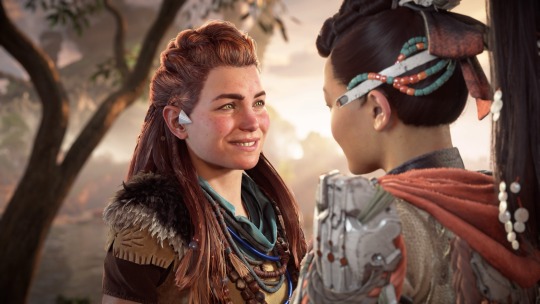
I present to you: post-apocalyptic gay ginger chosen ones smiling like an idiot after kissing the girl they like
#horizon zero dawn#horizon forbidden west#aloy#seyka#seyloy#aloy x seyka#the last of us#the last of us 2#ellie#dina tlou#ellie x dina#hzd#hfw#tlou#tlou2#aloy and ellie are my faves can you tell#PlayStation royalty#useless lesbians
488 notes
·
View notes
Text
btw: the creator, moa, hasnt received any royalties from hatoful boyfriend since epic games acquired mediatonic two years ago
the cringe police don’t want you to know that the bird dating sim hatoful boyfriend is actually a fantastically written bait and switch slow burn horror comedy that is not only genuinely entertaining, not only a genre defining piece of parody work, but also back in 2011, accurately depicted a post-pandemic rise in ethnonationalism. it’s the best game in the world and reading this back maybe the cringe police should come for me actually but it’s fine just carry on my legacy and play hatoful boyfriend
#epic is in their replies saying “we're looking into this” but thats still really fucked#bc its affiliated with epic its also now been removed from the apple store and the playstation store too#meaning shed be getting less royalties anyway.#sorry to track this onto your post ive just been upset about this for the past few days and wanted ppl to complain at :V
14K notes
·
View notes
Text
youtube
Today, we travel up falls to find out if we can fix our problems that are blocking our path in the previous area.
#youtube#numberxxisora#ps5#bandai namco#playstation 5#monkey craft#klonoa phantasy reverie series#door to phantomile#bewitched royalty
0 notes
Note
The savannaclaw boys imo seem latinoamericanos like Ruggie just being annoyed with "Rich people and their struggles" and I feel like he would use a bunch of slang plus being raised by his abuelita?? THAT BOY IS LATINO Add that he gets along with the kids of the slumps he lives in just overall i want to be with ruggie and just listen to good music while doing domestic chores (mostly cooking but cleaning while hearing oldies that your mom used to play is so good)
Jack is like middle (low) class like a stable family food on the table somehow they have a Playstation 4 in the living room to play yet its leftovers for lunch again and like the family can support like i don't remember the number of kids but sometimes Jack's little siblings needs to get hand-me-downs because they are saving up for a pool
Leona... Oh man royalty yet he is a dude that is distancing himself from his family I feel like he sees in what he reads the irony of the high class or privileged people and also Ruggie playing with bottle caps, rocks, using plastic bottles to play football.. And there is Leona: "I play ✨chess✨and ✨tennis✨" I just feel like he doesn't know those cleaning and cooking techniques you get teached by parents/guardians to save up money Leona grew up in the mentality that "Hm the fridge has a weird odor I should get a new one" that was exaggerated but with clothes for example like getting a shirt stained with bleach you don't throw that shirt away you still put it to use YOU MILK THAT SHIRT FOR ALL IT'S WORTH and make it a cloth to dust off stuff and clean the table
(love them all they need headpats)
-Vaquita
Valid Vaquita, you're so valid for all these thoughts tbh
I personally don't assign them as Latino cause vibes wise I don't match up for me personally, plus I have my own headcanons on what their Earth cultural equivalent would be.
I agree lets give them headpats
23 notes
·
View notes
Text

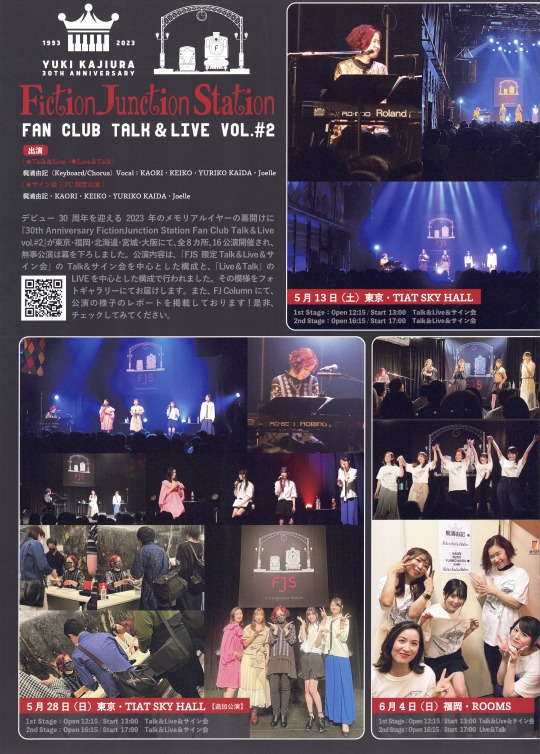

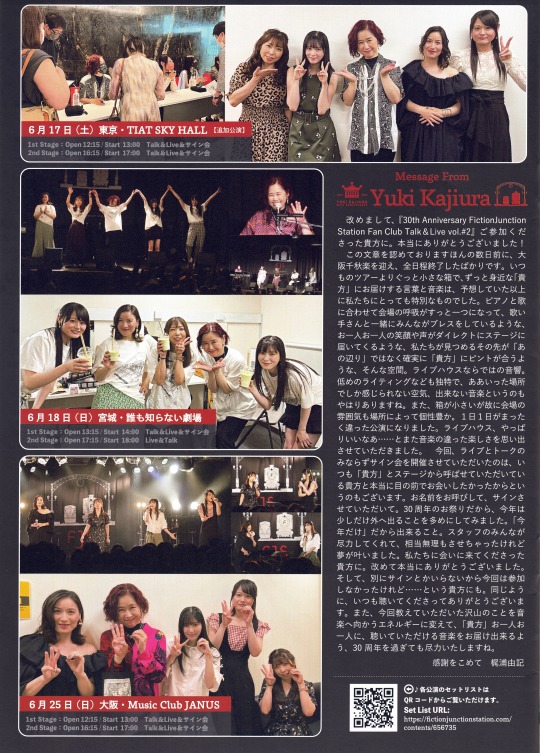
FictionJunction Station Express Railway Newsletter Vol.09 Scans
Here are my HQ scans of the latest FJS fan club magazine.
Vol.02 | Vol. 03 | Vol.04 | Vol.05 | Vol.06 | Vol.07 | Vol.08
❗This is Fan Club EXCLUSIVE content❗ ❗PERSONAL USE ONLY❗ Do ❗NOT SHARE❗ on other sites
I haven't scanned the previous two issues (yet) because there's nothing too exciting in them. This time there's a lot of coverage of their Fan Club events and a huge interview with Yuki Kajiura and Yasunori Mori (Mr. M - Yuki's manager).

I've learned so much about Yuki reading through this interview. Most of it is probably common knowledge to longtime Yuki Kajiura fans but I've always focused on Kalafina so I am by no means an expert when it comes to Yuki herself. I initially started reading this to find out whether they would say something interesting about Kalafina but they didn't really. Of course there was a substantial section dedicated to them but it was mostly stuff we already knew. As for Yuki, I particularly liked the part where they talked about their very first years together, how she and Mori met and how Yuki ended up signing up with Space Craft in 1993. I had no idea she had such a rough start to her career. Apparently no one was interested in See-Saw's music in the 90s because it was too hard to sing. That's one of the main reasons Chiaki Ishikawa decided to pursue a solo-career instead. During the first few years, she was still living with her parents, taking on part-time jobs and living off of roughly a thousand dollars a month from her music, making much less than during her previous job as office worker. Yuki praises Mori and Space Craft for always having her back, for being straightforward with her, for never making any false promises, for having enormous patience with her, for never forcing her to take on work that didn't interest her, for ensuring she was able to gain experience and steadily build a solid catalog for herself instead of smothering her with countless job offers just to milk her. She didn't get a good gig until 1998 when she was offered to do the soundtrack for a Playstation series called "Yarudora - Double Cast". Her earlier jobs hadn't brought in a lot of money but since the game was distributed by Sony she got to sign a very lucrative royalty contract (according to Yuki, Sony are apparently very adamant about music creators beings paid fairly). From then onwards, she was free of all her debts. Her next big breakthrough was her collaboration with Yuuka on Gundam SEED. Yuki says that if "Akatsuki no Kuruma" hadn't been such a huge hit, she would never have been offered the Kara no Kyoukai project which ultimately resulted in the birth of Kalafina.
Those of you who have been around for a while know that I've always been somewhat of an advocate for Space Craft and this interview just enforces my opinion of them. They have done some shitty stuff of course but overall they are pretty decent as far as Japanese talent agencies are concerned. Yuki then goes on to talk about her strong desire to remain at Space Craft for however long it would take to repay all the kindness that she received. That might explain why she was with them for such a long time (she signed up with them back in 1993)

Regarding Kalafina, here are some of the highlights:
Sony was close to despair when they held their audition for Kalafina because none of the singers had the necessary skill-set to sing Yuki's music which is pretty much how Wakana and Keiko got their appointed positions (because they had already had experience working with her)
Maya was eventually deemed unfit for this type of work because she was still in high school at that time
Kalafina was Yuki's all-time favourite project because she got to do whatever she wanted. There were no taboos whatsoever. Even when it came to tie-ins and insert songs, she had a lot of creative freedom because most of the creators in charge trusted her judgement.
I wish they had at least mentioned Yuki's departure from Space Craft and the "disbandment" but I guess they didn't wanna go there...
#kalafina#yuki kajiura#kajiura yuki#yasunori mori#space craft#scans#my scans#yk scans#keiko scans#fjs#fictionjunction station#fan club exclusive content
32 notes
·
View notes
Note
Dude I’m trying to play my sims to destress, got my AemondxOC household and the royalty mods and everything. We’re doing great. They successfully have their first kid, made it through the infant stage with all the glitches just fine and he’s a toddler now and it’s all going well, try for another and tell me why they have TRIPLETS.
IM CRYING THEYRE CRYING ALL FOUR KIDS ARE CRYING THE BUTLER IS CRYING THE NANNY IS CRYING IM SO FUCKIN STRESSED RN THEYRE NEVER ALLOWED TO WOOHOO AGAIN
-Fuckass Bob
The wave of Sims popularity completely passed me by as a kid (we didn't have a PC in our house until I was 14, so maybe that's why?), so I've never really understood the hype of that game. I've never played it! I was a Final Fantasy VII child. My sister saved to buy a secondhand Playstation, and her friend let us borrow her copy of FF7 and we'd spend hours on that.
5 notes
·
View notes
Text
Astlibra Revison is an RPG of a tremendous scale

by Amr (@siegarettes)
Astlibra Revision
Developers - KEIZO
Publisher - Whisper Games
PC, Switch
As Astlibra opens, your character finds himself stranded in a cabin at the edge of a lake, with nothing but an endless forest in front of him. After years at the cabin, he finally resolves to escape, trekking for eight years without contact through the forest, with no idea of when he may finally reach the edge.
Developed over the course of 15 years, by solo developer Keizo, you can feel the creator’s preoccupation with time and scale throughout Astlibra. The story’s themes are obsessed with time, with how our actions reverberate through it, and what we would do if given the opportunity to go back and change them. The scale of the game itself is tremendous, with system after system stacked upon each other in a way that wouldn’t feel out of place in a Tri-Ace title. Every system has been reexamined, throwing off the general assumptions of the genre.
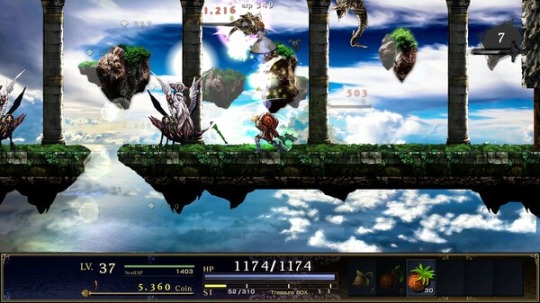
Simple interactions such as buying an item from a shop have been complicated, requiring you to have the appropriate materials on hand to purchase them, keeping you on the lookout for new drops from enemies, or experimenting with the crafting system to see if you can work out the recipe. Grinding these materials will naturally push you into the multiple growth systems, with both a traditional skill point system, but also a sprawling map of character bonuses that can be purchased with gems dropped from enemies. This cartographic journey will unlock more abilities, and ability slots, getting you excited to head right back into combat and keep the loop going.
Combat has the vibes of a later Ys title, if the series had continued following a sidescrolling format. The basic moveset isn't too complicated, with a ground combo, a launcher and spike, and a shield. Early on you'll also get an invincible back dash and magic spells, which enable some strong hit and run tactics. There's a varied arsenal to collect, and while they generally don't have significant moveset changes, considerations like range, attack speed and the unique skills you gain from mastering them keep weapons in rotation even as you progress.
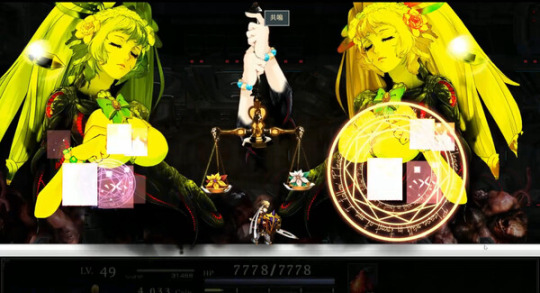
Positioning plays a huge part in combat, and the small cooldowns when your shield breaks, or your backdash ends can end with fatal damage if you're caught in the wrong group of enemies. Magic becomes essential here, providing crowd control and the ability to reposition yourself, with invincibility during the duration of the move. Mana builds through combat, empties outside of it, so you're also incentivized to use spells as soon as you're able, since you'll never be able to stockpile it for future battles.
Despite the myriad ways to prevent damage, you'll rarely come out of a battle unscathed, so spending and refreshing resources becomes essential to surviving even basic encounters. Astlibra is unafraid to push you to take advantage of every system, to the point where the very first boss appears nearly unbeatable until you learn every system. It's an ambitious and gutsy choice, one of many that go against conventional wisdom in modern RPG design. Astlibra is full of these, and it’s a true feat that it manages to remain coherent throughout.

A similar sentiment could be said about Astlibra’s aesthetics. Collaged almost entirely from a number of royalty free images and sound sources, Astlibra has a distinct look to it that calls to mind early Playstation games, where digitized imagery began to become popular. Stitching these images into a single world is a feat of its own, and it manages to stay coherent enough that it never draws attention to itself. Part of this is thanks to a group of professional artists, including Vanillaware veteran Shigatake, who provided the character portraits and sprites, and Haku Tatsufuchi, who created the art for the dragon bosses. The music is equally well selected, with a variety of musical styles, but all feeling as appropriate as if they were composed for the game. The most surprising were the tracks for the many emotional moments of Astlibra, which did a fantastic job selling the drama, something hard to do even in games with bespoke soundtracks.
It’s those big character moments that form the core of Astlibra for me. Even as I enjoyed playing with the various systems of the game, all of it remained motivated by my desire to unravel the next mystery, and my impatience for the next plot beat. Astlibra is full of heart, and it was impossible for me not to be charmed by it.
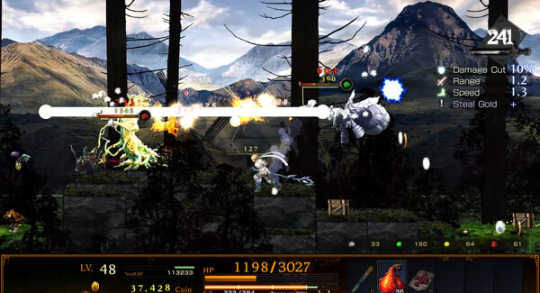
When you spend so many years working on a single thing, it’s hard not to lose faith in what you’re making, and harder to keep a coherent vision as you and the world around you continue to change. Despite the odds, Astlibra manages to hit on every aspect it tries for. It’s a triumph that kept me astounded at what a single person could accomplish.
9 notes
·
View notes
Text

ASTRO BOT NEWS!
Ever since last week's State of Play, I've been struggling to get the confirmation of a new Astro Bot game out of my mind!
As I've only owned a PS5 for just shy of 2 years, the Astro's Playroom experience is still gloriously fresh for this guy, and has easily been one of my most pleasurable Platinum trophy runs to date.
Before going any further, in case you've somehow missed the reveal trailer for Astro Bot, it's right here. Watch it. No, WATCH IT.
Now that you're educated in the ways of the Bot, we can continue. Oh and yes, that piercing scream you heard last Thursday night was in fact me after seeing PaRappa The Rapper in Astro form:

PlayStation royalty right there.
Now, moving on to what we know so far...
80+ levels spanning across 6 galaxies.
4 times the size of Astro's Playroom.
300 bots to rescue.
Dozens of new powers and features to discover.
NO in-game purchases or microtransactions.
PS5 exclusive - NOT releasing on PS4.
150+ PlayStation cameos.
NOT releasing on VR :(
Team Asobi look to have created something special for Astro in this standalone adventure that launches on 6th September!
We hope to bring pre-orders live to the website soon, TGCollectors!
*Excitement intensifies*
-Jack
#astro bot#ps5#team asobi#tgc#thegamecollection#astro's playroom#playstation fans#gaming news#gamers of tumblr#video games
5 notes
·
View notes
Text
“Surreal characters, simple controls and a catchy soundtrack turned the 2004 PlayStation 2 title into a masterpiece. Last month its sequel, We Love Katamari, which arguably perfected those qualities, was rereleased with improved graphics and new levels.
But Takahashi ended his involvement with the franchise and its publisher, Bandai Namco, long ago. He continues to live in the shadow of the katamari, experiencing the strange conditions of an industry where artistic creations become valuable intellectual property for companies. He says he does not receive any royalties from the sales of Katamari games.
“That is the nature of the business,” Takahashi said. “I am not important. The game is important. But myself? Who cares?”
Takahashi, 48, never intended to become a game designer; he originally trained as a sculptor at Musashino Art University in Tokyo. However, the young artist became disillusioned as classmates disposed of their creations after each assignment. “I realized that making art was not exactly useful,” he said.
That is why when a professor asked him to create a goat sculpture, he decided to turn the animal into a flower pot that drained excess water from its udders.
“I cannot forget that moment when everyone started laughing,” Takahashi recalled from his office in the garage of the San Francisco home where he lives with his wife, Asuka Sakai, a composer, and their two children. “That was when I realized what I should do, and I believed video games could provide joy and fun to people.”
(…)
A demo at the 2003 Game Developers Conference in San Jose caught the attention of industry leaders at a time when the market was mostly focused on multiplayer shooters like Medal of Honor and Halo. Here was something new and unusual for American audiences, invariably described as a “dung beetle” game or a “snowball simulator.”
(…)
“It feels like Katamari Damacy escaped Japan by accident,” said Paul Galloway, a collection specialist at the Museum of Modern Art who helped establish its video game program, which includes Takahashi’s debut. He added that “it presages a lot of aesthetics found during the 2010 indie gamer boom.”
(…)
But by 2009, Takahashi announced he was leaving video games, saying he would help design a playground in England.
“He is a very singular creator,” said Laura E. Hall, a game designer based in Portland, Ore., who wrote a book about Katamari Damacy. “And that is often at odds with the need to move units in the video game industry.”
Takahashi was coming off the self-described “beautiful failure” of a project called Noby Noby Boy, the one with the alien caterpillar, which received tepid reviews and had lackluster sales. The playground was also doomed; city commissioners were not too keen on the designer’s circular doughnut slide or the giant climbing frame that seemed to extend five stories in the air.
He returned to the gaming industry, but this time wanted more control over the creative process. He had left Bandai Namco because he did not think its other engineers were passionate enough.
“They were making games for the money,” he said. “And if I wanted to make a new project, I would need to hire staff from the company, which was super limiting.”
(…)
By the time Takahashi released Wattam, featuring the green cube, in 2019, Bandai Namco was already remastering his katamari games without his input.
(…)
Galloway said it was normal in the gaming industry, as in other design fields, that individual creators don’t own their creations. After all, games are a collaborative art form, typically requiring dozens of people to make.
“Someone can take Katamari and do something wildly different,” Galloway said. “But there is something that can be lost. Keita’s unique vision for Katamari was lightning in a bottle, and after a while it becomes a bit diluted when you milk the same formula over and over again.”
Takahashi does not want to repeat himself. “Recently, I realized that I don’t really know what a video game is,” he said, explaining his attempts to shed his preconceptions about what defines a good game.
His new definition is much simpler: Bring joy back into people’s lives.
(…)
“I know our lives are not so fun. They are boring. We do the same things over and over,” Takahashi said. “But we should be celebrating the good things in life. Then we can become better people. That’s my thing right now.””
“Katamari Damacy is a special sort of game. So special in fact, that it sidetracked me from writing this several times, playing the game in an absent-minded daze, marvelling at how 塊,the Kanji for katamari, already looks like a small prince rolling stuff up. It worms itself inside your brain by giving the mundane a unique sort of whimsy.
Whimsy, silliness and fun on first glance seem like something unrestrained and purposefully difficult to capture, but Katamari's game director Keita Takahashi made these feelings into substantial pillars of the design philosophy that informs all of his games. Katamari is meant to convey novelty, ease of understanding, enjoyment, and humour, all in a neat little package.
(…)
Yet most of the motivation comes from how you receive encouragement much more frequently than punishment. You're not told to hurry, all items you pick up are equally valid to build your clump with. The consequences of bumping into something are never catastrophic. The King of all Cosmos often reacts enthusiastically to your efforts and the nature of the things you roll up, which is understandable, given I'm generally just as overjoyed whenever I find a spare pound between the couch cushions. The wrath of your father the king is severe, but easily soothed by success. The knowledge that it was his drunken debauchery that nearly caused the collapse of the entire cosmos in the first place makes it difficult to take him seriously in his anger. This way, the king is a quintessential dad - a stern, occasionally threatening force on one hand, the guy who falls asleep with his mouth open at a rerun of "I'm a celebrity" on the other. (I'm absolutely not drawing on personal experience here.)
Narratively, Katamari could make a dire point about the dangers of consumerism and the fact that there really is quite a lot of stuff on earth, but as with every other aspect, it's lenient and careful not to hamper your enjoyment. There is a joy in collecting, after all, preserved all the way from collecting shells from the beach, shiny buttons or stickers as children. Why not virtual thumbtacks and cucumbers?
Nothing about Katamari Damacy would work quite as well, however, if it weren't for its laid-back visual aesthetic. With his background in art, Keita Takahashi isn't so much interested in games as he is in playfulness. You can immediately see influences like Taro Okamoto or Yayoi Kusama in the way he uses colours and shapes.
(…)
By not taking itself too seriously, Katamari allows you to do something that may not serve a distinct purpose. It invites you to look at something visually pleasing and hum a happy tune, to unite what by all accounts shouldn't be united into a satisfying shape. Takahashi's games are different to us because we already have an idea in our minds of how games work, how fun is facilitated and how you maximise engagement. Takahashi found his own answers to all of these questions and instead drew on ideas that are equally familiar to his players from other aspects of life.
Katamari Damacy is designed to appear mostly unconcerned with design, at least the right kind of design. Instead, it's something that simply feels good, and that feeling never goes out of style.”
“Katamari Damacy achieves all of its emotional weight without any complex story or characters, without surmounting any gameplay challenges. This simple game only occasionally deviates from your goal of making your Katamari as large as possible under a time limit.
(…)
Just like any mythology, this simple plot and characters themselves express a deeper network of meanings and associations. In Steven Reale’s Chaos in the Cosmos: The Play of Contradictions in the Music of Katamari Damacy, he notes that the King often dashes the Prince’s attempts to live up to his approval throughout the game. The King towers over the tiny Prince, and even when a level is successfully completed, the King still asks that next time, “we want a bigger one” (Reale, 2011). At its heart, Reale suggests the story of Katamari is that of the frustrations of childhood.
(…)
Katamari Damacy was often referenced by game content producers on YouTube, and its praise by some of my favourite reviewers is what initially piqued my interest. It was through the nostalgic lens that drives so many classic game enthusiasts that I learned an important lesson: the games that I played during these developmental years will have an unrivaled amount of cultivated memories associated with them. More importantly, this is worth celebrating and sharing with others.
(…)
Katamari Damacy captured everything that made childhood special, and more precisely, why it was so joyous to reclaim “play time” all to the tune of “Cherry Blossom Color Season”, one of the most powerful and serene tracks on the soundtrack. The game’s composer, Yuu Miyake even cited it as his favourite song from the whole series, a simple but powerful showcase of his ability to compose a song only with simple chords and melody (Napolitano, 2009).
The moment was pure bliss. I have never felt so completely and holistically happy playing a game, and I think Katamari Damacy achieves this moment by virtue of its simplicity, which consistently evokes a sense of childhood, imagination and free play. Miyake’s simple song was coupled with straightforward gameplay and tactile controls. Together, these elements created the sense of pure joy and discovery that comes with exploring levels and discovering hundreds of new objects.
(…)
In a 2009 Game Developers Conference talk, Takahashi confirmed that Katamari Damacy was about consumption society. This presented a problem: his goal to make things light-hearted, silly, and fun was wrapped up in work that expressed a cynical stance towards society. He stated, “I wanted to make more objects. If there are few objects, I feel lonely. If there are more objects, they will make things more colourful. But when they’re rolled up, they’re gone. I felt empty” (Welsh, 2009).
Takahashi’s dilemma was that the game presented his signature simple, soft, and colourful aesthetic, but it came from a place that was fundamentally cynical. He wanted to critique our desire to collect, consume, and progress. The gameplay necessitated that we participate in that consumption.
But even before this confirmation, critical commentators were already reading the game as an anti-capitalist, Marxist text. In Ryan Stanci’s Katamari Damacy – A Critique he argues that if the Marxist critique of art links that work to enforce or challenge the values of consumer society, then Katamari specifically comments on a culture obsessed with collecting and archiving (2006).
(…)
Despite Stanci’s conclusion that our desire to collect is what hits the right buttons for consumers, and our innate desire to collect it all, perhaps there is something inherently innocent about that desire, even if it can result in destruction. Stanci quotes Joseph Lewandowski’s Unpacking: Walter Benjamin and His Library, where he says the following about the children and collecting:
“They collect forgotten and ignored phenomena, they name “dead” objects. According to Benjamin, such an alternative world-view accomplishes a kind of renewal and rescue – children retrieve objects and stimulate life in a frozen cultural modernity; they re-enchant, albeit momentarily, a disenchanted world […] It is precisely in collecting as a child-like ‘mode of acquisition’ that a genuine collector emerges” (1999).
I believe that the childlike practice of collecting to re-enchant the disenchanted word is the ultimate achievement of Katamari Damacy.
(…)
While it is clear that Takahashi is critical of his own work, ultimately, I don’t think our experiences with his work are in conflict. Takahashi designs works to make people happy, even if it’s only for a brief moment. Katamari, to me, perfectly encapsulated the joy and the silliness of childhood, however brief that experience may be.”
17 notes
·
View notes
Text
The Art of Decision-Making
Tactics Ogre is a game that first released in 1995. It saw a re-release on the PlayStation Portable (PSP) with a revamped title: Tactics Ogre: Let Us Cling Together before emerging once more to grace our consoles as Tactics Ogre Reborn. And as a fan of the Final Fantasy Tactics game, who also thoroughly enjoyed her time with Triangle Strategy, trying out the original inspiration behind these two games was a no-brainer. After all, strategy/ tactical role-playing games have always been able to present the conflicts of war in a both complex and engaging manner, especially when they allow for personal choices to influence the trajectory of where the story may go.
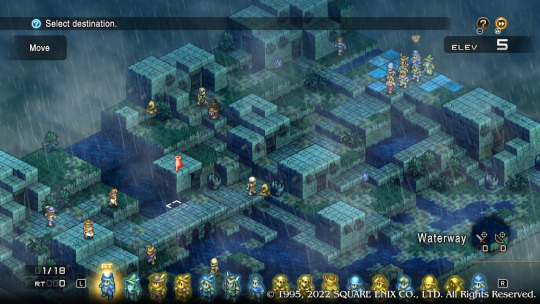
Of course, given this is a role-playing game from Japan, a supernatural element must be inserted. Along with a late-game reveal of the true antagonist. In Tactics Ogre, I was pulled a little from my enjoyment of the story when the initial focus was resolved and the final boss ended up being with a literal demon incarnation of the previous king.
True, they had sprinkled in some of King Dorgulua’s backstory with Catiua’s reveal but the war between the Gods and the Ogres (whilst present in the opening credits) was mentioned little throughout the game, what with its focus on the repercussions on war. So, the entire exposition with Dark Knights Barbas and Martym felt a little hamfisted in its attempt to introduce the big bad at the end of the game.
In a way, it also dismissed a lot of the earlier turmoil that took up the bulk of the game was insignificant as a God emerged from the depths to rule over the world. Especially as, even though you can have Catiua in your party, her relationship with King Dorgulua is never touched upon during that final battle.
Beyond these little titbits, as well as a few well-worn tropes of disguised royalty, I did still thoroughly enjoy the initial set-up of the game with Denam, Catiua and Vyce rebelling against Galgastan oppression on the Walisters. The internal fighting among the rebellion, the moral dilemma of whether or not to kill your own to drag unwilling participants into war and the underhanded tactics to install a ruler over the land of Valeria was a sight to behold.

In fact, it would have been the preference of this humble blogger if things had remained there with King Dorgulua’s name fading into the annals of history. Or if there had been renewed focus on the nations of Lodis or New Xenobia and what their stakes were when it came to meddling with Valerian affairs.
Given that the game came out back in 1995, though, it’s understandable for why the developers decided to go down the route they chose. Despite the questionable choice of ending boss battle, the game still holds up even today. I would have liked some additional context with the other Ogre Battles and the history of the world I found myself in (this entry being the seventh episode) but I was still able to follow along in terms of the general motivations of the core characters as well as the villains.
This was especially astounding when it came to the choices that Denam had to choose in key beats of the plot. The variations of choice, even dialogue options, had ramification for the ending. Not to mention the Chaos Frame mechanic that was hidden behind it all and could have led to other distasteful outcomes for our main protagonist.
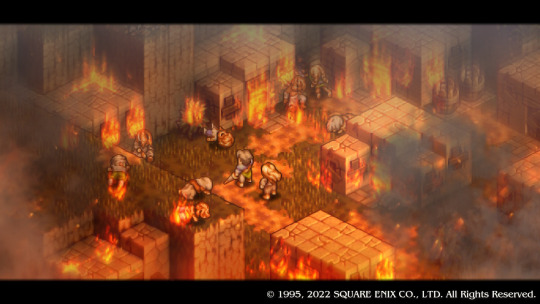
The gameplay for Tactics Ogre is very similar to Final Fantasy Tactics. It includes hiring or recruiting generic fighters to the cause and using them in battle. Of course, there are also unique characters with their own special sprites. But in terms of the actual flow of battle, the unique characters added little. Although, some had special classes that added a little flavour to battles. It should be noted that for every major battle, only Denam, had to feature in them all. The other playable characters could be interchanged with little repercussions. Or dismissed if the need arose.
Just like Final Fantasy Tactics, the game featured an overworld map and when a battle was entered, it would zoom onto a particular map with a grid overlay. Characters can move, use skills and perform one action. The action could range from using spells, items or actually attacking another character. The key to Tactics Ogre’s battle system is not unlike the weapon triangle of Fire Emblem. However, it is switched to six elements. Those being fire, water, lightning, earth, air and ice.
There is also an unspoken counter system with mages being better placed to counter buffed frontline attackers, mages being vulnerable to ranged attacks from archers, and units with higher defence taking minimal damage from ranged weaponry. Something I only gradually picked up on later as I favoured charging in and trying to destroy everything as quickly as possible.
Mana, like Triangle Strategy, is a limited but rechargeable pool that is empty at the start of battle. This differs from Final Fantasy Tactics, which allowed mages to immediately start raining hellfire onto their foes from the very beginning. It allowed for more tactical positioning as I awaited for enough mana to unleash what spells I had equipped my magic users. Mana was also important for non-magic users too as they were key to using finishing moves that could deal out a ton of damage.
As such, there was a good strong focus on buffing up the magic reserves for all characters. The only downside to this, of course, was how few and far between such mana replenishing items were as they did not appear to be sold at shops and had to be found as drops from enemies or occasionally scrounged up from certain tiles on battle maps.
One important thing I noted when playing Tactics Ogre Reborn was the fact that items, spells and skills were limited. One could not deck out their favourite warriors with 99x of all items. Rather, they could equip four of each. This meant that item usage, spells and skills had to be considered for each encounter. While this led to a few annoying battles where I struggled against certain units (of note, beasts), it did add another layer of strategic thinking to an otherwise excellent game known for the tactics needed.
Especially as there was a level cap for my characters!

I was utterly devastated to learn that I could not simply overlevel all my characters to decimate the opposition. Rather, my characters were all limited by the ‘Union Level.’ This allowed battles to be even-playing fields and I couldn’t take advantage of better stats to stack the battlefield. A shame, I know, but I made up for it by exploiting crafting and ensuring that my army was well-armed and well-equipped for each battle I went into. If I hadn’t used the exploit and had played it as it was intended, I would have, no doubt, struggled a little more with the game with fewer resources at my disposal and having to better pick and choose the units I took into each battle.
Of course, such things could be counteracted by picking up buff cards that could allow me to deal more damage than my unit might have usually been able to deal out against a particular enemy. It was especially useful against the final boss.
Overall, I enjoyed my time with Tactics Ogre Reborn. While I would have preferred being able to overlevel my units so I didn’t have to fear losing against difficult bosses, it allowed me to think differently on how I engaged with tactical role-playing games. There was even some joy in it when it came to repurposing my units and swapping out abilities and spells when required to deal with a particular annoying foe that favoured certain status effects such as petrification or fear.
Most of all, what I loved most of Tactics Ogre Reborn was the world-building and the hidden layers within. Perhaps one of these days, I could find a way to play the other Ogre Battle games but for now, I am still quite satisfied with the complex world that was crafted to explore what it means to rebel against oppression and to dream of a fairer and better world.

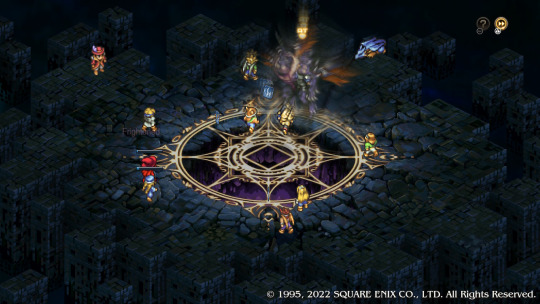
#video games#tactics ogre reborn#tactical role-playing game#square enix#denam#catiua#king dorgulua#choices matter
5 notes
·
View notes
Text
I'm also in the second generation.
My first console was a ColecoVision. Additionally, I had the very innocuously named "ColecoVision Expansion Module №1." Gather round, children, and let me tell you about this interesting little bit of kit.
ColecoVision Expansion Module №1 was a small black box about the size of a hotel bible, constructed of the same black faux-leather plastic as the ColecoVision, with a slight downward slope to it. It slotted into the front of the ColecoVision, giving the entire console this awkward L shape when fully connected. On the top were a couple of switches and a cartridge port, and it had two standard 9-pin joystick ports on the front. ColecoVision Expansion Module №1 had but one purpose: it allowed you to plug in and play Atari 2600 cartridges.
Can you imagine it, young person of today? Can you imagine if there was a little dongle that you could plug into your PlayStation 5 that would let you play Nintendo Switch games?
So how did they get away with it? It's not like Coleco was quiet about it: they even blatantly advertised that "you can play all Atari 2600 games on a ColecoVision, but you can't play ColecoVision games on Atari!" Well, the fact is that the Atari 2600, also known as the VCS, was built entirely with off-the-shelf parts; there was nothing custom but the wood paneling. There was no proprietary operating system, either: a VCS just hard-booted to whatever software instructions were on the cartridge chip. As such, a company with the right resources could easily construct their own VCS clones, with their own components... and a few did, including major retailers of the time like Sears and Radio Shack. ColecoVision Expansion Module №1 was, in essence, an entire Atari 2600 clone in a tiny package, with the power supply and TV connection hardware removed and provided by the ColecoVision host (they would eventually release a full VCS "twin" called the Gemini). Oh, sure, there was a lawsuit, and a counter-suit on anti-trust claims, and it was all settled for royalties... in fact, the two companies eventually settled into a quiet partnership and released some of their own exclusives on each others' systems.
So when people ask me if I ever owned an Atari 2600, I have to be honest that I did own and play many Atari 2600 games, but I never had an Atari myself. I had this little marvel of a device, impossible today, a throwback to the wild times before the crash of '83 when there were no patents, no operating systems, no standards (technologically or artistically), when forgiveness was asked instead of permission, and when a rival could take your entire console, shrink it down, and glom it onto their own.
This Wikipedia article has a more comprehensive list
12K notes
·
View notes
Text
Master Game Development with Godot: The Ultimate Beginner’s Guide
Game development has changed greatly over the past few decades. Choosing the correct engine is necessary for any developer. Among numerous options, Godot has emerged as a versatile free and open-source game engine. Whether you’re a first-time game developer or an experienced one looking for customization, Godot offers a richly featured, efficient, and cost-effective solution.
Well, in this blog we’ll be digging deeper into the capabilities of Godot, its unique features, advantages over other engines, and how you can use it for your projects.
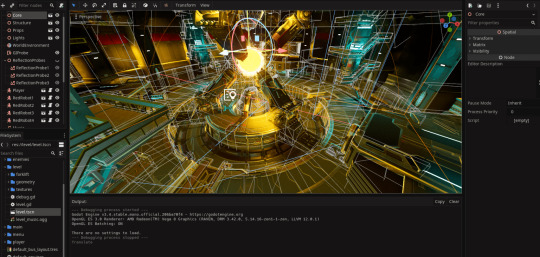
What is Godot Engine?
Godot is a highly open-source and free cross-platform game engine where it supports all forms of developing both 2D and 3D games. Juan Linietsky developed this game first in 2014, after which it turned into a love for indie game development for studios as well as creators. Godot is licensed under the permissive MIT license. This means that developers can use it to create, modify, and distribute their games without paying royalties. It’s an advantage over proprietary engines like Unity or Unreal, whose licenses are often very complex.
Features that Make Godot Unique
1. Node-Based Architecture
The modular architecture of Godot organizes games into scenes composed of a hierarchy of nodes, each having a specific purpose-be it rendering graphics, handling physics, or processing logic. Such an approach can easily manage and reuse components with ease, and this makes the development of a game much easier.
2. GDScript and Multi-Language Support
Godot also features a very simple scripting language called GDScript, which, much like Python, is intuitive to use, but can do just about anything, from low-level C-like access to actual low-level details. For a bit more involved work, it’s possible to use C# and VisualScript for even more powerful and complex operations.
3. 2D Game Development Excellence
Its strong dedicated 2D engine makes it one of its highlights. This gives pixel-perfect precision, an animation editor in-built within the tool, and capabilities to create tilemaps, shaders, and particle effects. From making a platformer to designing a puzzle game or a visual novel, Godot’s 2D capability stands second to none.
4. Advanced 3D Rendering
Godot has the tools to use real-time global illumination, PBR materials, and a fully integrated visual shader editor for 3D projects. It is also capable of importing assets from popular 3D modeling software like Blender.
5. Multi-Platform Deploy
Godot allows deploying easily to all desired platforms. Deploy to:
Desktop: Windows, macOS, Linux
Mobile: Android, iOS
Web: HTML5 using WebAssembly
Consoles: With third party support for PlayStation, Xbox and Nintendo Switch
6. Customizable Editor
The editor itself is an open source which can be easily customized. As a result you can tailor your editor for work. Customize its themes, swap panels, script editor behavior – do anything according to your liking.
7. Lightweight and Efficient
Godot’s small footprint makes it run even on less powerful hardware, and it is the best for developers who do not have access to high-end machines.
Why Developers Love Godot
1.Free and Open-Source
Godot’s MIT license allows developers to use, modify, and distribute the engine without any legal or financial restrictions. This is particularly beneficial to indie developers and small studios who have a small budget.
2. Active Community and Resources
The Godot community is active and collaborative, providing access to many tutorials, forums, and resources. Developers can also participate in the development of the engine at GitHub, thereby ensuring that it is continuously improving.
3.Regular Updates and Roadmap
Godot is regularly updated, bringing about major changes in rendering, physics, and usability. Godot 4.0, the next version, promises to be cutting-edge with Vulkan support for advanced graphics.
4. Ease of Use
Godot’s intuitive design and comprehensive documentation make it accessible to beginners while still providing the depth needed for advanced projects.
Challenges and Limitations
Although powerful, Godot has some drawbacks as well.
Smaller Ecosystem: Compared to Unity or Unreal, Godot’s asset store and third-party plugin ecosystem are not as deep.
Learning Curve for Complex Projects: The advanced 3D development can be much deeper in understanding the engine and what it can actually do.
However, the challenges are mitigated by the active community and continuous development.
Conclusion
Godot stands to be one of the game-changers in the development world, offering a perfect balance of power, flexibility, and accessibility. For open-source nature and this extensive feature, it is an ideal choice for both indie developers and seasoned professionals. Godot builds on the potential of open-source innovation and represents a bright light in an open world. Whether your project is a pixel-art platformer or an expansive 3D adventure, Godot offers what you need to bring your dream to life.
0 notes
Text
Introduction to Unreal Engine for Game Development
Unreal Engine (UE) is one of the most popular and powerful game development engines in the world. Developed by Epic Games, Unreal Engine has revolutionized the gaming industry with its state-of-the-art features, stunning visual quality, and versatility. From high-end AAA games to indie projects, Unreal Engine provides the tools needed to create immersive, visually spectacular worlds. Whether you're an aspiring game developer or a seasoned professional, Unreal Engine offers a comprehensive platform to turn your creative visions into reality.
In this article, we will introduce you to Unreal Engine, explore its key features, and discuss how to get started with game development using this powerful engine. By the end, you'll have a solid understanding of what Unreal Engine is capable of and how you can use it to build the next big hit in the gaming industry. Aspiring developers can benefit from enrolling in a game design institute in Pune, where you can gain hands-on experience with Unreal Engine and learn from industry experts.
What is Unreal Engine?
Unreal Engine is a comprehensive suite of development tools used to create high-quality games and interactive experiences. First released in 1998, it has evolved over the years and is now in its fifth version, Unreal Engine 5 (UE5). The engine is known for its exceptional graphical fidelity, scalability, and user-friendly interface. It’s used by developers of all levels to create games for platforms such as PC, consoles, mobile devices, VR, and even films.
Unreal Engine is free to use, with Epic Games offering a revenue-sharing model where developers only need to pay royalties once their game exceeds a certain revenue threshold. This makes Unreal Engine an attractive choice for both independent developers and large studios.
Key Features of Unreal Engine
Unreal Engine stands out due to its powerful features that enable game developers to create stunning visuals, complex game mechanics, and expansive worlds. Some of the key features include:
- High-Quality Graphics:
Unreal Engine is renowned for its visual capabilities. The engine uses a physically-based rendering (PBR) system that allows for highly realistic lighting, materials, and shading. The introduction of Unreal Engine 5 has taken graphics to new heights with features like Nanite, a virtualized geometry system that enables developers to create and import highly detailed assets without worrying about polygon count limits.
- Blueprints Visual Scripting:
��One of the most exciting features of Unreal Engine is Blueprints, a visual scripting system that allows developers to design gameplay mechanics without writing a single line of code. This feature makes Unreal Engine more accessible to beginners, as you can prototype game ideas and interactions easily using a drag-and-drop interface.
- Unreal Marketplace:
Unreal Engine has a robust online marketplace where developers can find assets, plugins, tools, and other resources to speed up development. Whether you need 3D models, textures, or sound effects, you can find it all in the Unreal Marketplace, some of which are free or available for a nominal fee.
- Real-Time Rendering:
Unreal Engine’s real-time rendering capabilities are one of its key strengths. It allows developers to see changes and updates in real-time, which is essential for rapid iteration during the development process. This feature is especially important for large-scale projects that require constant feedback and fine-tuning.
- Multiplatform Support:
Unreal Engine supports a wide range of platforms, from desktop computers (Windows, Mac, Linux) to consoles (PlayStation, Xbox) and mobile devices (iOS, Android). This cross-platform capability allows developers to create games for a wide variety of audiences.
- Advanced Physics Engine:
Unreal Engine incorporates an advanced physics engine that supports real-world physics simulations, including rigid body dynamics, collisions, and gravity. It also includes support for soft-body physics, making it ideal for creating realistic interactions in games.
Unreal Engine for Game Development
Unreal Engine is widely used for game development across various genres, from open-world adventures to first-person shooters, racing games, and more. The engine’s flexibility allows developers to create games that range from hyper-realistic simulations to stylized, artistic worlds. Here’s how Unreal Engine supports game development:
1. Level Design:
Unreal Engine provides a powerful editor that allows developers to build, edit, and preview game levels directly within the engine. The editor supports drag-and-drop functionality, enabling you to quickly populate your world with assets, environments, and lighting. The Landscape Tool helps you sculpt terrains, while the Foliage Tool allows for the creation of natural vegetation.
2. Character Design and Animation:
Unreal Engine supports character design through the Skeletal Mesh System, which allows you to create and animate 3D characters. You can import your character models and animations from external programs like Blender or Maya, and Unreal Engine’s Animation Blueprint system allows for advanced character animations, such as running, jumping, and fighting.
3. AI and Behavior Trees:
Unreal Engine comes with robust tools for developing AI (Artificial Intelligence) behaviors. Using the Behavior Tree system, developers can create complex AI logic, such as enemy patrol routes, decision-making, and combat strategies. Unreal Engine also supports pathfinding algorithms that help AI characters navigate through the game world effectively.
4. Multiplayer and Networking:
Unreal Engine provides the tools necessary for creating multiplayer games. With its built-in networking framework, developers can create both local and online multiplayer experiences. Unreal Engine’s Replication System ensures that game states are synchronized across multiple players, providing a smooth multiplayer experience.
5. Post-Processing Effects:
Unreal Engine includes advanced post-processing tools that can enhance the visual quality of your game. With options for color correction, bloom, depth of field, motion blur, and more, you can fine-tune the visual aesthetics of your game to achieve the desired look and feel.
Getting Started with Unreal Engine
For newcomers, getting started with Unreal Engine can seem daunting, but there are plenty of resources available to help you learn. Whether you’re an aspiring game developer or a seasoned professional, Unreal Engine has the tools you need to create your own game.
Here’s a step-by-step guide to getting started with Unreal Engine:
1. Download and Install:
The first step is to download Unreal Engine from the Epic Games website. You can use the Epic Games Launcher to install the engine and access various assets and tutorials.
2. Learn the Basics:
Once you’ve installed Unreal Engine, take the time to familiarize yourself with the interface. Unreal Engine offers an abundance of tutorials, both official and community-created, to help you get started. You can explore everything from basic game creation to more advanced techniques like AI programming and multiplayer development.
3. Start a New Project:
Unreal Engine offers different templates for various types of games, such as first-person shooters, side-scrolling platformers, and top-down shooters. Choose a template based on the type of game you want to create and start experimenting.
4. Use Blueprints for Prototyping:
Use Unreal Engine’s Blueprints Visual Scripting to quickly prototype your game mechanics. This tool allows you to design complex gameplay systems without writing code, which is especially helpful for beginners.
5. Experiment with Assets:
Try importing your 3D models, textures, and animations into the engine to see how they look in the game world. Take advantage of the Unreal Marketplace to find free or paid assets that you can use in your game.
Conclusion
Unreal Engine is one of the most powerful and accessible game development engines available today. With its exceptional visual quality, real-time rendering, cross-platform support, and extensive tools, Unreal Engine provides everything you need to create stunning, interactive 3D games. Whether you’re a beginner or an experienced developer, Unreal Engine offers the resources and flexibility to turn your game development ideas into reality. By taking the time to learn the basics and experimenting with its many features, you’ll be on your way to building the next great game. Aspiring developers can enhance their skills by enrolling in an animation academy in Pune, where you can gain hands-on experience with Unreal Engine and receive guidance from industry professionals.
0 notes
Text
Jigsaw Puzzle Fever Review (PlayStation 4)

For this Jigsaw Puzzle Fever Review, the pieces are laid out on the screen - the player simply scrolls through the available pieces and selects a piece. Otherwise, this is just digital puzzles and you cannot possibly lose the pieces!
Jigsaw Puzzle Fever Review Pros:
- Photo graphics. - 424.9MB download size. - Platinum trophy. - Jigsaw gameplay. - A brief tutorial pop-up. - Five difficulties - Easy, not so easy, normal, hard, and expert. - You can pick up and drop pieces wherever you want on the board. - Correct piece drops click into place and cannot be moved again. - Every level it timed. - Puzzles can have modifiers like the ability to rotate pieces or not. - End of puzzle breakdown. - Grid on or off. - If allowed you can see the completed picture. - A limited number of hints on a puzzle. - Puzzles are split up on the menu and you complete puzzles to then unlock more puzzles. - All puzzles are themed. - The puzzles can be special ones like a timed one, no hints, or limited picture lookups. - Simple controls. - Online leaderboards. - Choose your own route through the puzzles and their order. Jigsaw Puzzle Fever Review Cons: - Cannot rebind controls. - The music is really bad generic royalty-free music on a loop. - The menu in the puzzle is clunky and not clear. - Has a mobile game look and feel to it all. - General piece management is a real pain as you cannot freely roam the drop zones on the puzzle. - It just doesn't play well or move as freely as it should and other Jigsaw games do. Related Post: Vampire: The Masquerade New York Bundle Unboxing Jigsaw Puzzle Fever: Official website. Developer: NYX Digital Publisher: Funbox Media Store Link - PlayStation Read the full article
0 notes
Text
Microsoft conclui aquisição da empresa de videojogos Activision-Blizzard
A gigante tecnológica Microsoft concluiu na sexta-feira a aquisição da empresa de videojogos Activision Blizzard por 69 mil milhões de dólares (62,2 mil milhões de euros), depois da aprovação pelo regulador do mercado britânico.

A compra dos estúdios por detrás de séries de jogos de sucesso como Call of Duty, Diablo, Overwatch, World of Warcraft ou Guitar Hero foi, finalmente concluída, depois de obter a aprovação pela Autoridade da Concorrência e Mercados do Reino Unido (CMA, na sigla inglesa), a última barreira para a aquisição.
O processo de aquisição tinha sido anunciado em janeiro de 2022, tendo, desde então, esperado a aprovação de vários reguladores de mercado.
Em abril, a CMA levantou o primeiro entrave à aquisição, apontando para os riscos da compra, temendo os efeitos no mercado dos videojogos.
Agora, o parecer da CMA que validou o negócio, um dos maiores da indústria tecnológica e o maior do 'gaming', enalteceu a introdução de uma cláusula, em agosto, em que a Microsoft concedeu à Ubisoft os direitos de jogo em nuvem da Activision.
"Este novo acordo colocará os direitos de transmissão em nuvem (fora do Espaço Económico Europeu) de todos os conteúdos da Activision para computador e consolas produzidos nos próximos 15 anos nas mãos de um concorrente forte e independente, com planos ambiciosos para oferecer novas formas de acesso a esses conteúdos", refere a CMA em comunicado.
A Microsoft acredita que a compra da Activision Blizzard poderá ser um impulso para a consola Xbox, que ocupa o terceiro lugar em vendas, atrás dos sistemas PlayStation, da Sony, e Switch, da Nintendo.
A juntar-se a isto, a gigante tecnológica ambiciona a integração dos títulos das produtoras agora adquiridas no serviço de subscrição Game Pass.
"Começamos hoje o nosso trabalho para trazer os 'franchises' da Activision, da Blizzard e da King [Candy Crush Saga] ao Game Pass e a outras plataformas", refere um comunicado hoje divulgado no portal da Xbox e assinado pelo responsável do departamento de jogos da Microsoft, Phil Spencer.
Desde o anúncio da aquisição que Phil Spencer tem defendido que a compra é positiva para a indústria dos videojogos, defendendo que permitirá levar os jogos da Activision a mais pessoas e em mais plataformas, incluindo nas da Sony e Nintendo.
No total, reguladores de mais de 40 países aprovaram já a aquisição.
O aval da União Europeia surgiu depois de a empresa concordar em permitir que os utilizadores e as plataformas na 'cloud' transmitissem os jogos sem o pagamento de 'royalties' durante 10 anos.
Ainda assim, o acordo para a compra enfrentou resistência das autoridades britânicas e norte-americanas, que receavam que pudesse asfixiar a concorrência, uma posição defendida pela rival Sony, que receou que o acesso à série Call of Duty na sua plataforma fosse limitado.
Criada em 1979 por antigos funcionários da Atari, a Activision criou ou adquiriu muitos dos mais populares jogos de vídeos, incluindo as sagas Crash Bandicoot, Spyro, Tony Hawk.
Em comunicado na sexta-feira divulgado, após a aquisição, o presidente executivo da Activision Blizzard, Bobby Kotick, anunciou que abandonará o cargo após o final do ano, para "apoiar a transição" para a gigante de Seattle, contrariando o noticiado aquando do anúncio da aquisição.
O anúncio de janeiro de 2022 aconteceu numa altura em que a Activision estava envolta em polémica, por alegações de má conduta e desigualdade salarial.
1 note
·
View note
